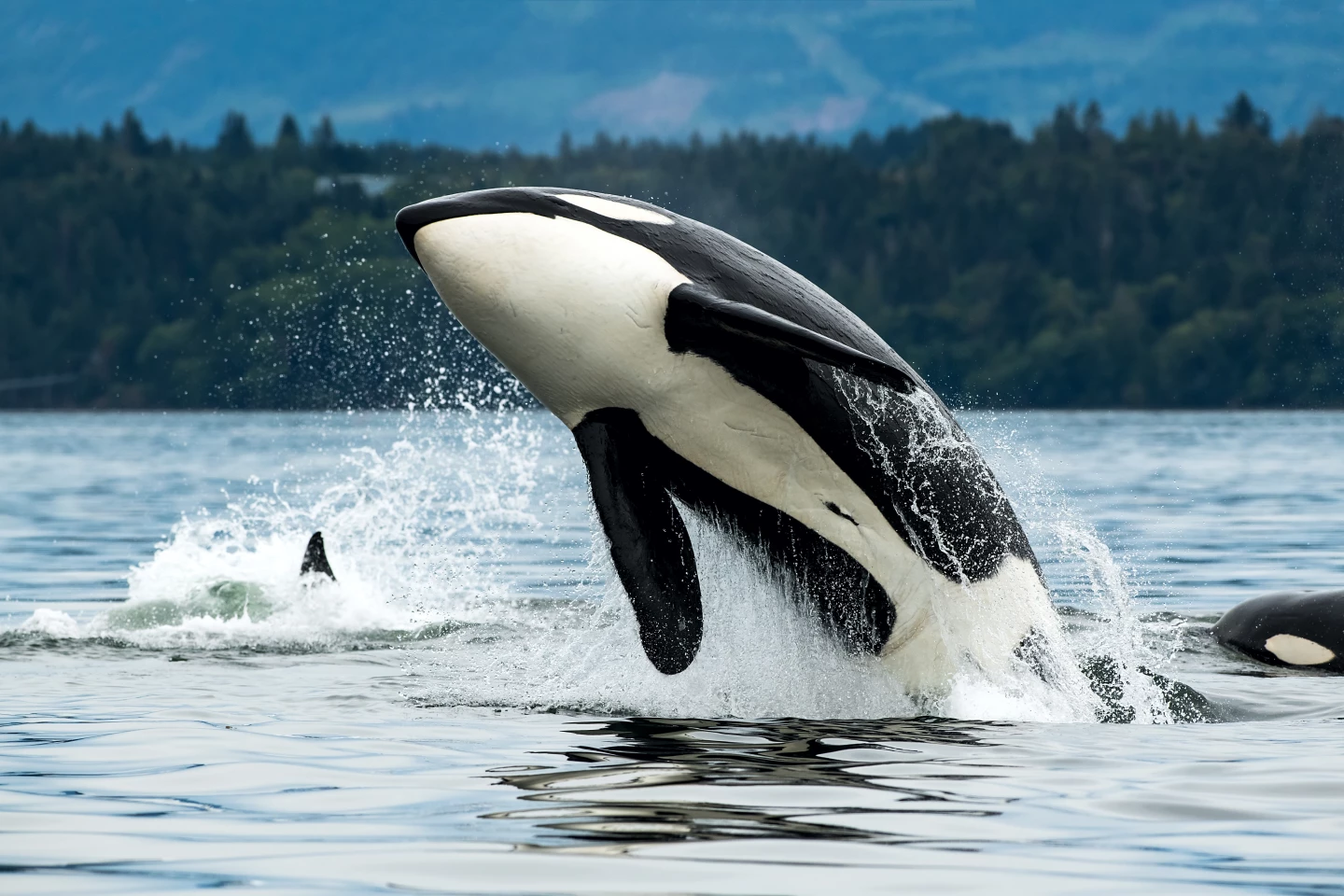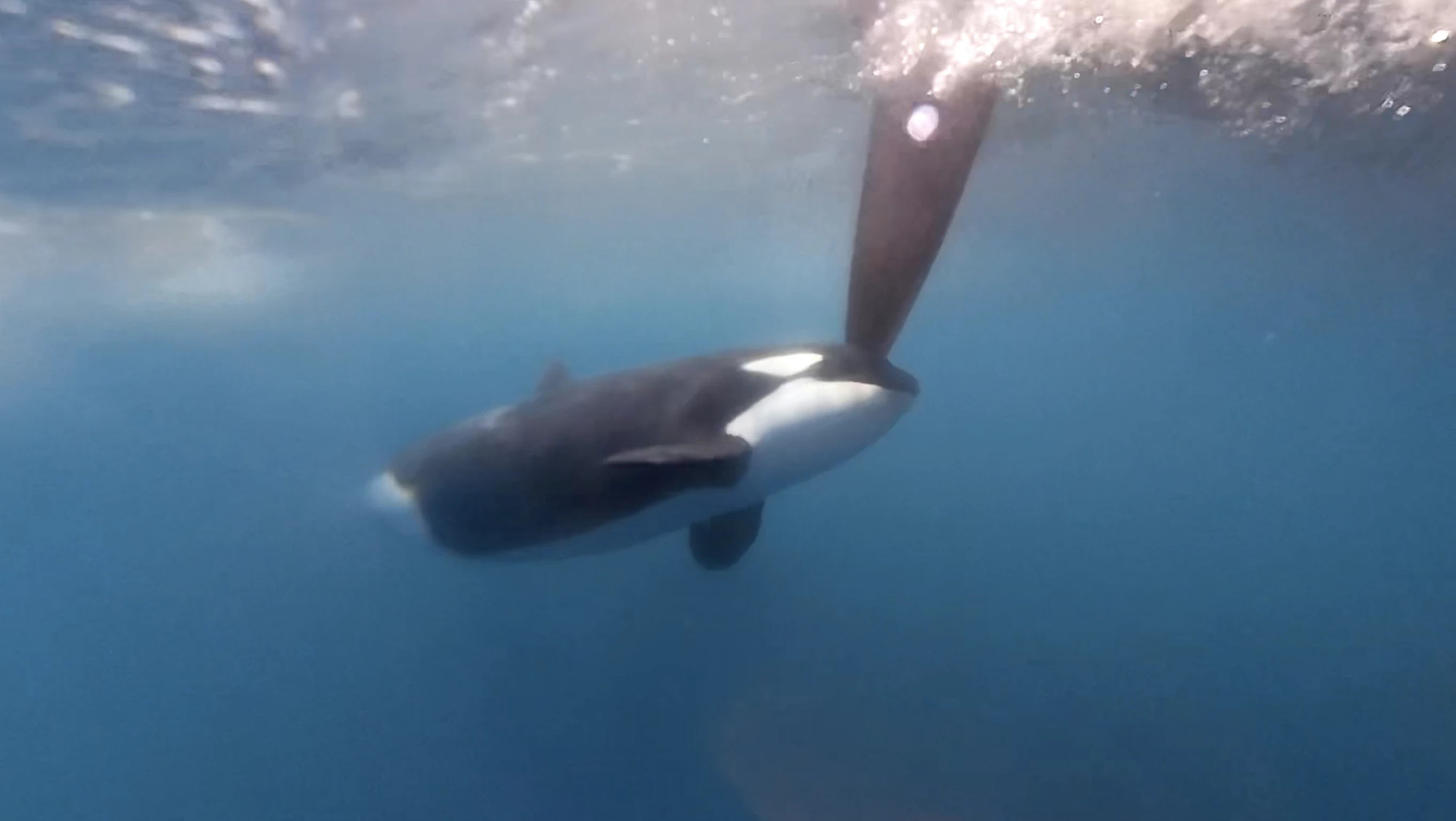For four years now, orcas have been ramming and sinking luxury yachts in European waters, and scientists have struggled to work out just why these smart, social animals had learnt this destructive new trick. But it's not due to some anticapitalist 'eat the rich' agenda, nor is it to do with territory and aggression. The truth is, well, it's child's play.
Following years of research, a team of biologists, government officials and marine industry representatives have released their findings on just why one particular Orcinus orca group has developed this destructive streak. And it turns out, orcas – especially the kids and teens – just want to have fun. The report reveals that a combination of free time, curiosity and natural playfulness has led to young orcas adopting this 'trend' of boat-bumping, which is not at all surprising for a species that has been known to adopt odd, isolated behaviors from time to time.
In recent years, a dramatic recovery in the population of bluefin tuna in the region has been a win for a group of about 40 critically endangered Iberian killer whales that feed exclusively on the large fish. This has meant they've cut down their time spent foraging, leaving space for other 'hobbies.'
"In addition, climate change could be playing a role, leading to these tuna being in the Gulf of Cádiz continuously rather than seasonally," the scientists noted. "This year-round abundance means that there appears to no longer be a need for the whales to pursue every fish encountered."
Analyzing data collected from individual orcas and through observation, the scientists found that the 'attacks' on vessels usually involved a couple of animals at a time, from a core group of 15 that have so far been observed messing with boats. But these 'attacks' are anything but – from the orcas' perspective, at least.
Most of the 15 were male juveniles and teens, the "most curious and exploratory" of an orca population, suggesting that what started as playful head-bumping on boat rudders has escalated as the animals have grown larger. The team notes that this rudder-bumping behavior was observed around 2017, but the interactions didn't result in any boat damage. Now that the orcas are larger, their game has become a lot more powerful.
And no orca over the age of 25 – when males are fully grown – has been seen participating in the tomfoolery. Scientists suspect younger orcas have seen older siblings playing with their rudder 'toys' and then copied. (Some females have been spotted, but they're most likely there just to babysit the kids.)

"Killer whales are known to play with other objects or animals in their environment to the point of damaging them (in the southern resident killer whale population of Washington, USA, which feed on salmon, individuals will ‘play’ with harbour porpoises to the point of killing them, which may be a similar escalation of an initially less harmful interaction), so this behaviour seems on that spectrum," the scientists wrote.
The animals are known to be sensitive to trends, with scientists having observed odd new behaviors spreading through a pod like a TikTok challenge, only to be forgotten just as quickly. Perhaps most famously, in 1987, a female orca in the Pacific Ocean near Puget Sound was observed carrying a dead salmon on her head; within two months, killer whales from her pod and two others were also wearing 'fish hats.'
It was all a fad, and eventually died out – although this shot from 2019 suggests at least one orca might be trying to bring it back...
"Different populations often have distinct dietary specialisations that are maintained by cultural transmission, and these 'ecotypes' typically have a variety of persistent behavioural traditions that are related to their divergent foraging," the authors wrote. "Some populations may also develop unusual and temporary behavioural 'fads' and other idiosyncrasies that do not appear to serve any obvious adaptive purpose. Understanding the recent boat interactions by Iberian killer whales may benefit from an examination of such ephemeral traditions in other well-studied killer whale populations."
Still, one orca's playtime is another human's frightening encounter, as this video from The Ocean Race in 2023 shows (fast-forward to around 20 seconds).
Boat owners and authorities will no doubt be hoping that this rudder-play trend will also be phased out sooner rather than later.
Since 2020, Atlantic Orca Working Group (GTOA) reports there have been 673 "interactions" between the marine animals and watercraft since 2020, with at least four boats sinking. Just two weeks ago, an unknown number of orcas – also known a little less favorably as killer whales – repeatedly rammed the 49-ft (15-m) yacht Alboran Cognac in the Straight of Gilbraltar between Spain and North Africa. After the passengers and crew were rescued by an oil tanker, they watched from afar as the yacht took on water and soon disappeared below the surface.
The latest sinking saw the Spanish maritime rescue agency SASEMAR issue a statement warning boat-owners not to venture too far from the shore and, whatever they do, don't drop anchor in open water in the high-risk zone.
"In an ideal world, there would be a simple strategy for mariners to follow when killer whales interact, which would avoid vessel damage and harm to the whales. Unfortunately, there appears to be no such panacea," the authors of the study wrote. "The singular agreement amongst the experts at this workshop is that the interactions between Iberian killer whales and vessels are not aggressive. The interactions have more elements consistent with fad behaviour or play/socialising than aggression. The use of such terms as ‘attack’ to describe these interactions is thus inappropriate, misleading and should cease."
Source: International Whaling Commission






